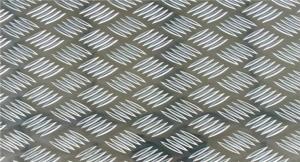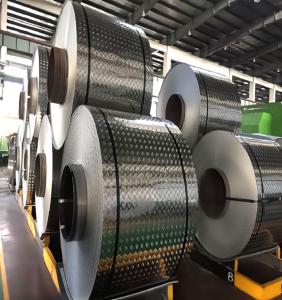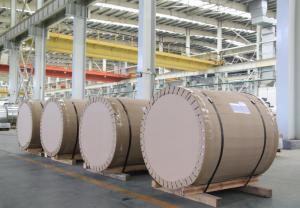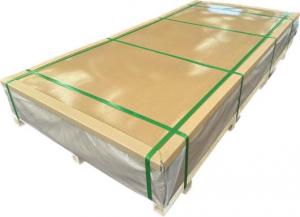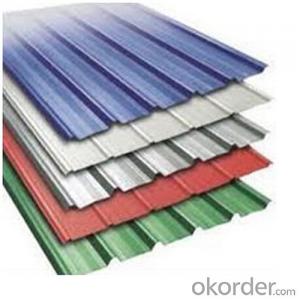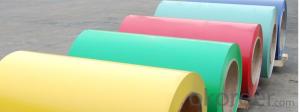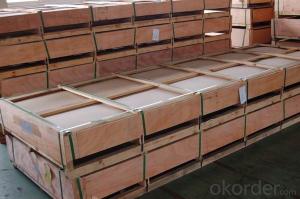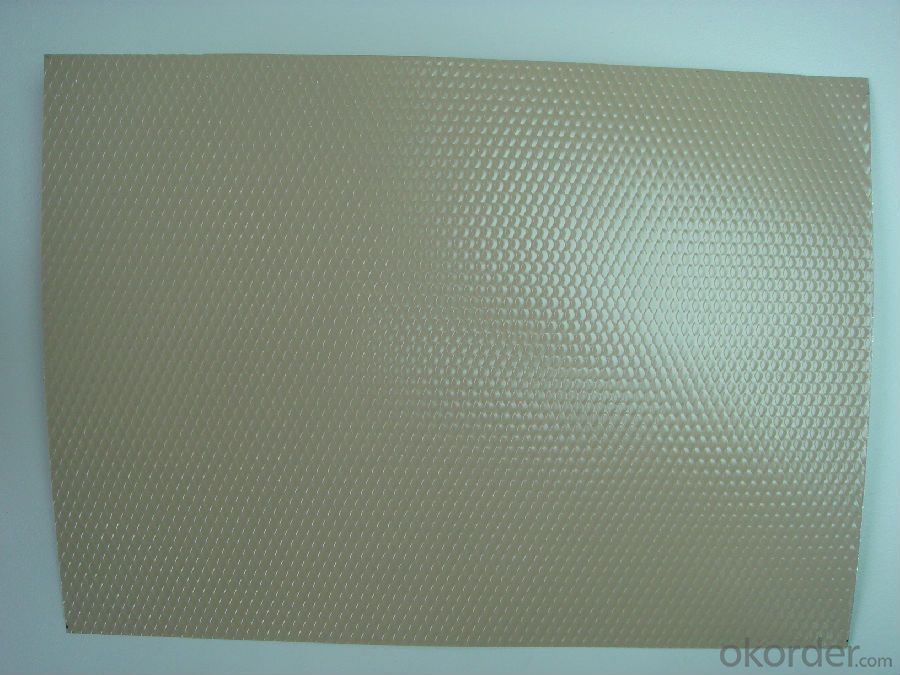Five Bars Pattern Embossed Aluminum Checkered Anti-Slip Coated Sheet and Coil
- Loading Port:
- Shanghai
- Payment Terms:
- TT or LC
- Min Order Qty:
- 4 m.t.
- Supply Capability:
- 100000 m.t./month
OKorder Service Pledge
OKorder Financial Service
You Might Also Like
1. Specifications of Five Bars Pattern Embossed Aluminum Sheet and Coil
Alloy | AA1xxx(1050,1060,1070,1100 etc.) |
AA3xxx(3003,3004,3005,3105 etc.) | |
AA5xxx(5005,5052,5083,5754 etc.) | |
Temper | H14,H16,H18,H22,H24,H26,H32 |
Thickness | 0.2-20mm |
Width | 10mm-1500mm |
Embossed | Diamond, Stucco, Three/Five Bars |
Standard | GB/T3880-2012,EN485, ASTM B209 |
Application | Anti-Skid Floor, Decoration Floor etc |
Special specification or color is available as per customers’ requirement | |
2. Uage/Application of Five Bars Pattern Embossed Aluminum Sheet and Coil
The embossed aluminum coil/sheet are widely used for decorative purpose in construction, packing and appliance. It is also very commonly used for anti-splippery purposes in vehicles and public places.
3. Packaging & Delivery of Five Bars Pattern Embossed Aluminum Sheet and Coil
Seaworthy package, plastic bag covered inside, carton wrapped outside, paper core, on the wooden pallet. Pallet weight: 2000-25000KG.
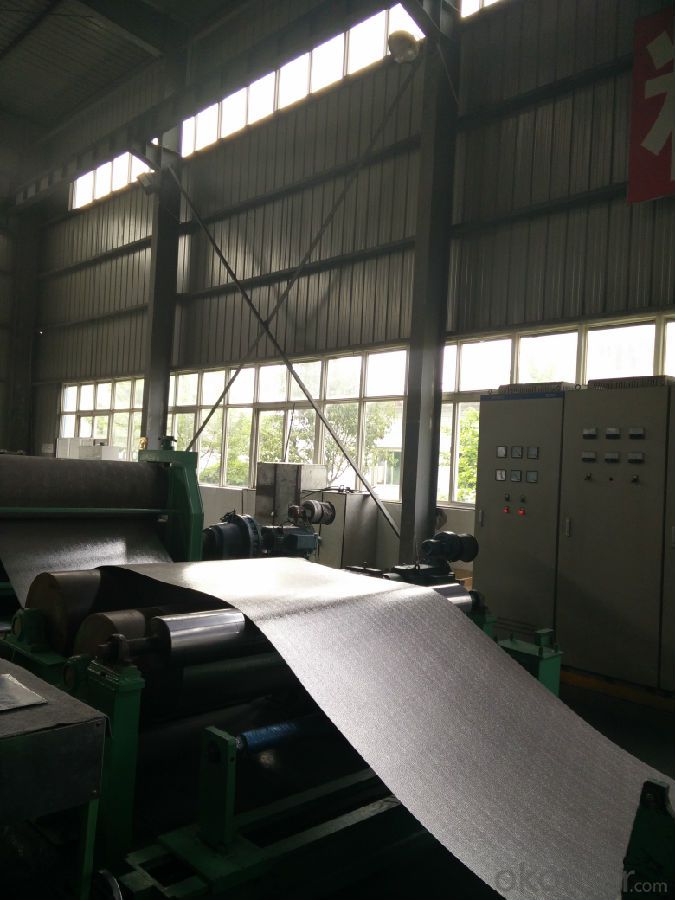
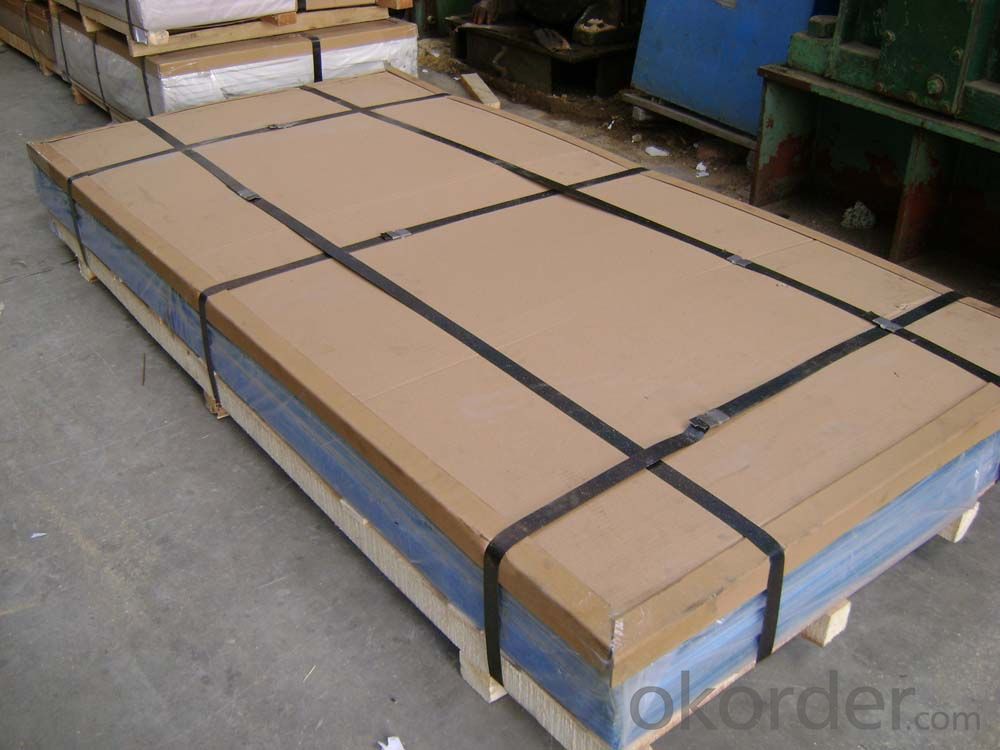
4. Production Flow of Five Bars Pattern Embossed Aluminum Sheet and Coil
Melting-Rolling- Cutting- Annealing--Packing
5.FAQ
We have organized several common questions for our clients,may help you sincerely:
① How about your company?
A world class manufacturer & supplier of aluminum coil and alloy blanks. Aluminum production base is comprised of 18 aluminum annealers, 10 coil and foil mills, 4 continuous production lines, 2 hot rolling production line and 3 prepainted lines. Export 5000 tons per month to Asia, America and Middle East. Always do the best for our clients.
②Can you guarantee the quality of the products?
We are responsible for the quality of materials to get a long-term cooperation with clients in a reasonable period of time and we are glad to arrange and coordinate any third party inspection for you.
③What is the delivery time after purchase?
35 day after receiving client’s deposit or correct LC.
- Q:How do you join aluminum sheets together?
- To join aluminum sheets together, there are various methods available depending on the specific application and desired joint strength. The following techniques are commonly used: 1. Welding: Aluminum can be welded using gas tungsten arc welding (GTAW or TIG), gas metal arc welding (GMAW or MIG), or laser welding. These processes involve melting the aluminum at the joint and introducing a filler material to create a strong bond. Welding offers excellent strength and durability, but it requires skill and suitable equipment. 2. Riveting: Aluminum sheets can be fastened together using rivets. This technique involves drilling holes through the sheets and using a rivet gun to insert and deform a rivet, creating a secure joint. Riveting is a relatively simple and quick method, but its strength may not match that of welding. 3. Adhesive bonding: Industrial adhesive bonding is a popular method for joining aluminum sheets. Specialized adhesives formulated for aluminum bonding are applied to the surfaces, which then cure and form a strong bond. Adhesive bonding is advantageous as it evenly distributes stress and can join dissimilar materials. However, it may not be suitable for high-temperature or high-stress applications. 4. Mechanical fasteners: Aluminum sheets can be fastened together using screws, bolts, or nuts. This involves drilling holes and using fasteners to secure the sheets. Mechanical fasteners provide good strength and allow for disassembly if needed. However, they may require additional maintenance and can cause stress concentrations around the holes. 5. Clinching: Clinching is a cold joining method where aluminum sheets are pressed together using a punch and die. This process deforms the materials and creates a mechanical interlock, resulting in a strong joint. Clinching is a quick and cost-effective method, although it may not be suitable for thin or highly rigid sheets. Ultimately, the choice of joining method depends on factors such as the required strength, aesthetics, cost, and ease of fabrication. It is advisable to seek guidance from a qualified professional or follow specific guidelines to ensure a successful and reliable joint.
- Q:Are 101 aluminum sheets suitable for automotive body panels?
- Yes, 101 aluminum sheets are suitable for automotive body panels.
- Q:Can aluminum sheets be used in aerospace applications?
- Yes, aluminum sheets can be used in aerospace applications. Aluminum is a widely used material in the aerospace industry due to its excellent combination of strength, lightweight properties, and resistance to corrosion. It is used in various components of aircraft, such as the fuselage, wings, and structural panels, where weight reduction is critical for fuel efficiency and performance. Additionally, aluminum sheets can be easily fabricated and formed into complex shapes, making them suitable for various manufacturing processes in the aerospace industry.
- Q:Hello, I dont really know anything about using a drill or cutting through metal or wood. the thing is I have a project in which I have to drill some holes in 0.04in aluminum. but I really dont know if can use regular drill bits used for drilling wood to drill the holes in my aluminum chassis. do I need to buy other drill bits for cutting metal or can I use the same ones Ive seen used for cutting wood? can I even use the same kind of drills, or do I NEED a huge bench drill with stepper bits?thanks
- Aluminum is softer than steel, so you could just use the ordinary bits that you use for wood, with a hand drill. For cleaner holes, you might want to put wood behind the aluminum as a backing. Also, if you squirt a drop of oil onto the drill area, that will help. If you're trying to drill a really large hole, it might be better to drill small ones, and enlarge with a round file.
- Q:I've had a Champion bass boat forever, but today I bought an aluminum G3 boat that was so cheap I couldn't pass it up. The G3 is aluminum. What are the pros and cons?
- In general terms, you will get a smoother, quieter better ride from the fiberglass than the aluminum. The fiberglass is heavier and will ride a little deeper in the water. Obviuosly, the aluminum will bounce off rocks better than the glass, but we usually try to avoid those situations. Also, resale will most likely be better on the good glass boats.
- Q:Could copper wire be welded with aluminum sheet?
- Copper wire could be welded with aluminum sheet, and it needs to use low temperature welding method, if copper wire is in the unit of millimeter and aluminum sheet is also in the unit below 1 mm, you can use electric soldering iron to heat it as hybrid welding and choose low temperature welding materials, you can use WEWELDING M51 welding wire and M51-F flux to complete welding. As for the large aluminum sheet, you can take liquefied gas multihole lance as heat source, then choose the same low temperature materials as welding materials, you can use WEWELDING M51 welding wire and M51-F flux to complete welding. Welding fundamentals of these two welding methods: both of them are use heatable heat source to heat the matrix to 179 degree, the melting point of WEWELDING M51, then use matrix’s heat conduction to melt welding wire, completing welding. The process of melting welding wire is the process of smearing the welding wire with flux into welding area, melting welding wire completely depends on matrix’s heat conduction.
- Q:The minimum thickness of aluminum curtain wall is 2, 5mm or 3mm?
- The veneer is 2.5 mm, and the composite plate needs to be explored
- Q:Are aluminum sheets suitable for decorative lighting fixtures?
- Yes, aluminum sheets are highly suitable for decorative lighting fixtures. Aluminum is a lightweight and versatile material that is easy to work with and manipulate into various shapes and designs. It offers excellent corrosion resistance, making it suitable for both indoor and outdoor lighting fixtures. Additionally, aluminum can be easily coated or painted to achieve different finishes, allowing for endless design possibilities. Its reflective properties also contribute to enhancing the overall lighting effect, making it an ideal choice for decorative lighting fixtures.
- Q:Are aluminum sheets easy to clean?
- It is generally a simple task to clean aluminum sheets. Aluminum, being a non-porous material, has the advantage of not readily absorbing liquids or stains. Consequently, it is fairly easy to remove dirt, dust, or spills from the surface of aluminum sheets with the use of a moist cloth or sponge. Furthermore, aluminum's resistance to rust and corrosion means that no special cleaning agents or treatments are necessary. However, it is worth noting that abrasive cleaners or scrubbing pads should be avoided as they have the potential to scratch the aluminum surface. In summary, by regularly maintaining and employing proper cleaning techniques, aluminum sheets can be kept clean and in excellent condition for an extended period of time.
- Q:What are the different methods of surface texturing aluminum sheets?
- There are several methods of surface texturing aluminum sheets, each with its unique advantages and applications. 1. Mechanical Texturing: This method involves the use of mechanical tools or processes to create patterns or textures on the surface of aluminum sheets. Examples include brushing, sanding, or embossing. Mechanical texturing is commonly used to create a matte or brushed finish on aluminum sheets, which enhances their aesthetic appeal and hides surface imperfections. 2. Chemical Texturing: Chemical texturing involves the use of chemicals to etch the surface of aluminum sheets and create unique patterns or textures. Acid etching is a common chemical texturing method that involves immersing the aluminum sheet in an acid solution to selectively dissolve the surface and create a textured surface. Chemical texturing is often used to improve the adhesive properties of aluminum sheets, making them suitable for bonding or coating applications. 3. Anodizing: Anodizing is an electrochemical process that creates a controlled oxide layer on the surface of aluminum sheets. This process can be used to create a variety of surface textures, ranging from a smooth, glossy finish to a rough, matte finish. Anodizing not only provides a textured appearance but also enhances the corrosion resistance and durability of the aluminum sheet. It is commonly used in architectural applications, consumer products, and automotive parts. 4. Laser Texturing: Laser texturing involves the use of laser technology to create precise and intricate patterns or textures on the surface of aluminum sheets. Laser beams can be precisely controlled to remove material or modify the surface in a desired pattern, allowing for highly customizable and detailed textures. Laser texturing is often used in decorative or high-end applications, such as jewelry, signage, or interior design. Each method of surface texturing aluminum sheets offers unique benefits and is suitable for different applications. The choice of texturing method depends on factors such as the desired texture, durability requirements, aesthetic preferences, and intended use of the aluminum sheets.
1. Manufacturer Overview |
|
|---|---|
| Location | |
| Year Established | |
| Annual Output Value | |
| Main Markets | |
| Company Certifications | |
2. Manufacturer Certificates |
|
|---|---|
| a) Certification Name | |
| Range | |
| Reference | |
| Validity Period | |
3. Manufacturer Capability |
|
|---|---|
| a)Trade Capacity | |
| Nearest Port | |
| Export Percentage | |
| No.of Employees in Trade Department | |
| Language Spoken: | |
| b)Factory Information | |
| Factory Size: | |
| No. of Production Lines | |
| Contract Manufacturing | |
| Product Price Range | |
Send your message to us
Five Bars Pattern Embossed Aluminum Checkered Anti-Slip Coated Sheet and Coil
- Loading Port:
- Shanghai
- Payment Terms:
- TT or LC
- Min Order Qty:
- 4 m.t.
- Supply Capability:
- 100000 m.t./month
OKorder Service Pledge
OKorder Financial Service
Similar products
New products
Hot products
Hot Searches
Related keywords
